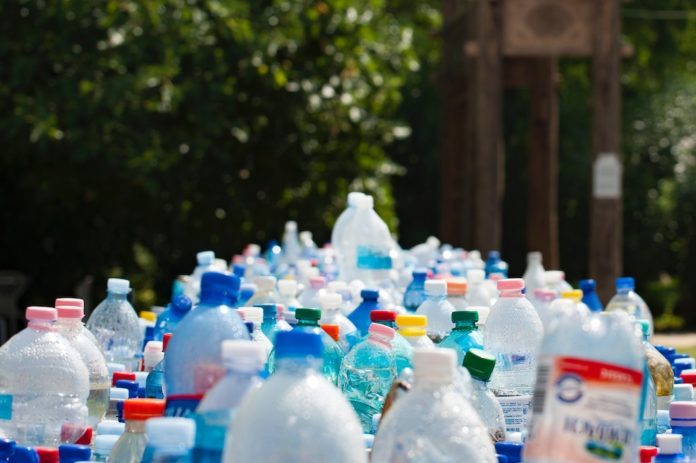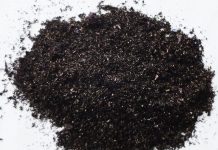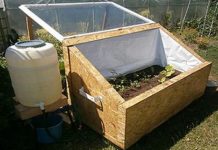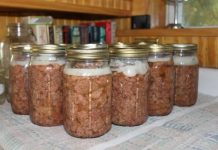Sure, it’s not a pretty topic– but as soon as the garbage man stops coming, or the sewer main shuts down, you’ll thank yourself for thinking about this issue ahead of time. Not only will waste pile up quite quickly, but the sanitation issues it causes will become a serious problem, particularly if this is a long-term SHTF scenario, or if there is a pandemic afoot.
We’ll deal with the less gross kind of waste– garbage bag waste– first. Then we’ll talk about plumbing problems and how to be safe and sanitary even during long-term SHTF scenarios. Lastly, we’ll also talk about the most uncomfortable topic of all: how to dispose of corpses when there’s no government. Corpses aren’t “waste” of course, but burying them properly is an absolute must if the government has collapsed.
The Problem with Open Garbage Piles
You’ll be surprised at how much waste you have on-hand just a week after the garbageman failed to arrive. You can’t just leave this waste out in bags at the edge of your driveway. It will attract animals, bugs, bacteria, and ultimately will end up spreading disease. While you may think you’d be producing less waste during a SHTF event (and while that may be true in the long term), at first you’ll be eating through the food you had in your fridge and cupboards, and producing as much garbage as you did before.
In the event of a natural disaster or a disease outbreak, your waste production will go up. Things will be damaged or ruined during a natural disaster, and you’ll need to dispose of much of it. During a disease outbreak, you’ll need to handle dirtied clothing and anything the sick have touched with much more caution than normal, creating a whole new waste problem.
Start Sorting
So where do you start? Let’s take inventory. According to the EPA, the average American household will have 26 percent paper and cardboard waste, 28.2 percent yard and food waste, 9 percent rubber, leather, and textiles, nine percent metals, six percent wood, and four percent glass.
Each of these types of wastes will need to be treated differently– which means you will need to start sorting it all out. Use different bins to collect each kind of waste as it is produced, which prevents cross-contamination and makes the next steps much easier.
Composting Food Waste
While you will likely have much less food waste than usual, whatever you do produce will attract bugs and animals quickly, so dealing with it should be your first priority. Thankfully, most food waste can simply be incorporated into a compost pile.
The basics of composting are to have a bin or box, throw foodstuffs or green matter in, along with brown matter or dead plant material. Generally, you need twice as much brown as green matter. Vermicomposting is an especially effective method for those who have limited space.
The biggest problem, for those preppers who don’t normally compost, will be finding a place to store the compost. Those living in cities, especially in apartment buildings, should collect their compost a bring it to the closest green spot, perhaps a public park. After all, when the city starts functioning again, you can just shovel the stuff into a bag and drop it off at a dump. Until then, hopefully, no one will mind that you’re disposing of your food waste there. Use a bin though, and proper ratios, in a well-draining area, or you’ll be creating a hazard in the park.
The second biggest problem you’ll be faced with is finding enough brown matter to balance out your green matter. Good solutions are nearby, including fallen leaves, old grass clippings, or brush trimmings.
What can’t or usually shouldn’t be composted
- meat and bones
- any lard, oil, grease
- milk and cheese
- human and animal feces (diapers included)
- diseased plants (unless you can get your pile quite hot)
- treated wood
- plants treated with chemicals
Leftover meat, milk, and greases are a problem because they will attract animals to the pile, including those which spread disease, like rats. These scraps can generally be fed to the family pet instead. If not, the meat and greases can be burned.
Burning Waste
You’ll hear from plenty of government agencies and environmental groups that burning waste is dangerous, and as a general practice, it is. For example, it is against the law in Minnesota. But, during a serious SHTF event, where the government is truly collapsed, we have to be more concerned with maintaining sanitation levels than with contributing to climate change. That being said, you don’t want to poison yourself while trying to get rid of trash–– so there isn’t much you can burn.
Don’t burn
- plastics and rubber
- metals, including pop cans
- things that have held chemicals (like bleach bottles or fertilizer containers)
- paper products with inks
- human and animal feces
- treated wood
Yes, there are industrial incinerators that can handle some of these products, but they get a lot hotter than a backyard fire can, even if you have a well-ventilated burn barrel.
Also, this is not the time to neglect fire safety. If the garbage collector isn’t arriving, the firefighter isn’t either. Burn-in controllable batches, away from plants and buildings, and have some water nearby in case something begins to catch. Don’t start fires on lawns– make a pit. Never leave a fire unattended.
Reducing Waste
If this looks to be a long-term SHTF scenario, many of the items you might commonly throw out should be cleaned and kept, in case they come in handy. Paper can be re-purposed as toilet paper. Cardboard should be flattened and stacked in case it comes in handy– perhaps as tinder.
Fabrics and leather may become useful as patches, wound dressings, etc. Plastic bottles and containers may become useful as water vessels etc., just don’t use containers that have held chemicals or non-food stuff as storage for edible things. The same goes for metal and glass containers.
Ultimately though, most of the garbage you’ll have on hand will be plastic bags and wrappings that aren’t burnable. There are steps you can take now to reduce this problem, including keeping your SHTF food supply in five-gallon buckets or other reusable containers. Having re-usable plastic containers instead of plastic bags in your home. You can also buy emergency meals packaged in cardboard over plastic bags, as cardboard is more useful and burnable.
Burying Waste
Those products which can’t be composted, burned, or recycled will have to be buried. This includes metals, rubber, treated wood, and plastics. Don’t bury something in a space where you may want to grow food in the future.
Mark out the spot. Bury it deep enough that animals won’t be digging it back up out of curiosity, which generally means you need a foot and a half of dirt over the garbage.
Don’t Flush the Toilet
Treatment of that other kind of waste is usually a more immediate concern during SHTF events, and it can be a much more dangerous issue. Research suggests that most people will first try to continue using their toilet until it is full, then move to the bathtub, and essentially make a huge biological hazard in the middle of their house.
If you flush your toilet when your neighbors are putting this kind of pressure on the sewer system, it will back up and enter your home– bringing their bacteria and viruses with it. So don’t try to even flush the toilet while the sewer main is down. In fact, it is ideal to have a sewer non-return valve installed on your line, because sometimes even if you don’t flush others’ waste can still flow into your home from the sheer pressure of everyone else trying to use the toilet.
Of course, if you have your own septic system you can keep using it until it’s full, so long as you have water you can add to flush. And, those who use composting toilets, and who deal with the compost on their own property, can continue using them. Speaking of which, if you want to move off the sewer grid, composting toilets are definitely something to look into.
Alternate Waste Collection
Though you can’t flush, you can keep using the bathroom, in a way, to keep comfort and privacy high. You just need to line the toilet with a heavy-duty garbage bag (or two). When you’re done you should put in sawdust, or even shredded paper and cardboard. That absorbs the urine and keeps the smell down.
Or, you can make a temporary toilet out of a five-gallon bucket or other plastic containers. You line it with a garbage bag just like the toilet. Some people even make temporary seats for it out of wood planks or rubber padding lining the edges. A kid toilet training seat works great too.
Burying Human Waste
Eventually, the bag is full, and then what do you? If you expect sewer service to be restored soon you could, carefully and securely, store it. Otherwise, you bury it. You may, of course, have to start with burying your waste in the first place, in a cat hole or latrine. But, no matter how you’re burying your waste, the rules are the same.
- Select an area that is at least 200 feet from a source of water. Avoid burying waste where the water table is close to the surface.
- Select an area where water doesn’t collect.
- Label the area.
- Attempt to disperse new holes, so that the waste will decompose faster.
- The waste must be covered by at least a foot and a half of dirt.
- The ground may sink if so, add more dirt.
For a very temporary solution, you can dig a small but deep hole, use it, and re-cover. But, if you’re going to be without sewage for more than a few days, you’ll need a more permanent solution: a latrine.
John Wiseman offers the best solutions for a latrine in his book the “
When the latrine isn’t in use, it needs to be covered by some kind of lid, so flies can’t get in. If they do they’ll bring the bacteria and viruses out of the latrine onto everything they touch, which is a fast way to get seriously ill.
You’ll find many preppers who recommend using lime or other disinfectants in the latrine, but Wiseman recommends against that, arguing the lime would kill the good bacteria that help to decompose the waste and thereby would make the latrine smell more.
Once you’re using a latrine there are a few things you can’t neglect, according to the World Health Organization. Firstly, each family should have their own latrine. This can help stop the spread of illnesses.
Secondly, you should set up a handwashing station nearby. Using warm running water and soap is always the best course of action as some bacteria and viruses, including serious stomach bugs, are not destroyed by antibacterial hand washes. Remember that when Western medicine is unavailable, even a case of diarrhea can kill you.
It’s also important to keep wearing shoes on the ground around the latrine, because intestinal worms and other parasites may eventually infect the soil.
In summary:
- don’t a dig latrine within 200 ft of water
- keep latrines covered when not in use
- cover latrines with at least a foot and a half of dirt when done
- wash hands after using the latrine
- have one latrine per family
- wear shoes
How to Handle Corpses
While not a “waste” management issue, proper burial or cremation of corpses is a serious concern during a SHTF scenario. It’s possible that someone you know may simply die of natural causes with very unfortunate timing. It’s also possible that someone you know will die of the same extreme circumstances that have shut the government and funeral homes down. And in either case, you’ll have to deal with the corpse yourself.
In America and most developed nations, corpses usually aren’t dangerous. The director of UCLA’s Center for Public Health and Disasters, Steven Rottman, told Popular Mechanics that bodies resulting from natural disasters are very unlikely to spread disease.
The dead, “may have other medical conditions, but they’re not living with highly communicable diseases,” Rottman explained, “they die from injuries.”
You do need to exercise some caution when burying or cremating a corpse after a disaster, including wearing gloves and shoes, washing your hands regularly, and avoiding touching your face. It’s also important to bury bodies deeply to prevent animals from disturbing them— have a minimum of a foot and a half of dirt over the corpse, preferably more.
An epidemic or pandemic presents a whole different challenge. In this case a body can be very dangerous. Although, it still may not be as dangerous as we think. Many communicable diseases will die a day or so after their host passes. Though, there are possible exceptions to this, so if you don’t know you should be extremely cautious when handling corpses.
WHO lists diseases that will require you to be extra careful when handling corpses:
- Tuberculosis
- Throat and digestive tract infections
- Meningitis and Septicemia
- HIV
- Hemorrhagic fevers like Ebola
- Hepatitis B and C
- Mad cow disease
To Bury or Cremate?
Once again, the best source for this information is the World Health Organization. They are concerned with a variety of issues that won’t be useful to you after a government collapse, including autopsy and treatment of the media, but they do have much other useful advice.
When possible, you should allow surviving family members to identify the body and choose whether the corpse is to be buried or cremated. When possible, you should also allow for their religious ceremonies to be performed.
If there is no family, and/or it is likely that the SHTF scenario will end, bodies should be buried, so families can find the remains of their loved ones later. If there is a chance you may be suspected of a crime when society re-emerges, bury the body so you have evidence to prove how the person died.
Burying is also ideal because cremating is difficult. It takes a lot of heat (2000 degrees Fahrenheit) and fuel to be done completely.
How to Bury the Body
- Bodies should be placed into body bags, or simply covered up for transport.
- For your protection, wear gloves. WHO argues that it is usually “sufficient to cover the mouth and nose,” when dealing with dead bodies, and even that should be done only when “necessary.”
- Graves, like latrines, have to be at least 200 feet from bodies of water.
- Be sure to mark graves.
- If you are in the midst of a serious disease outbreak, the body can be washed with a chlorine-based solution to reduce the risk of spread. You’re more likely to have bleach on hand, so use that if necessary, but it will change the appearance of the body.
Of course, the psychological toll this work will take is, in most situations, much more concerning than the physical risks. Be sure everyone treats the body with as much dignity as your circumstances allow. Take comfort in the fact that you took the time to provide the person with a proper burial, despite the very challenging circumstances you are facing.
Final Thoughts
While none of these subjects are comfortable to discuss, it’s important to have a plan to properly bury bodies, dispose of household waste, and replace the bathroom. Dealing with these subjects beforehand will ensure that your family is as comfortable and healthy as can be when SHTF.





















